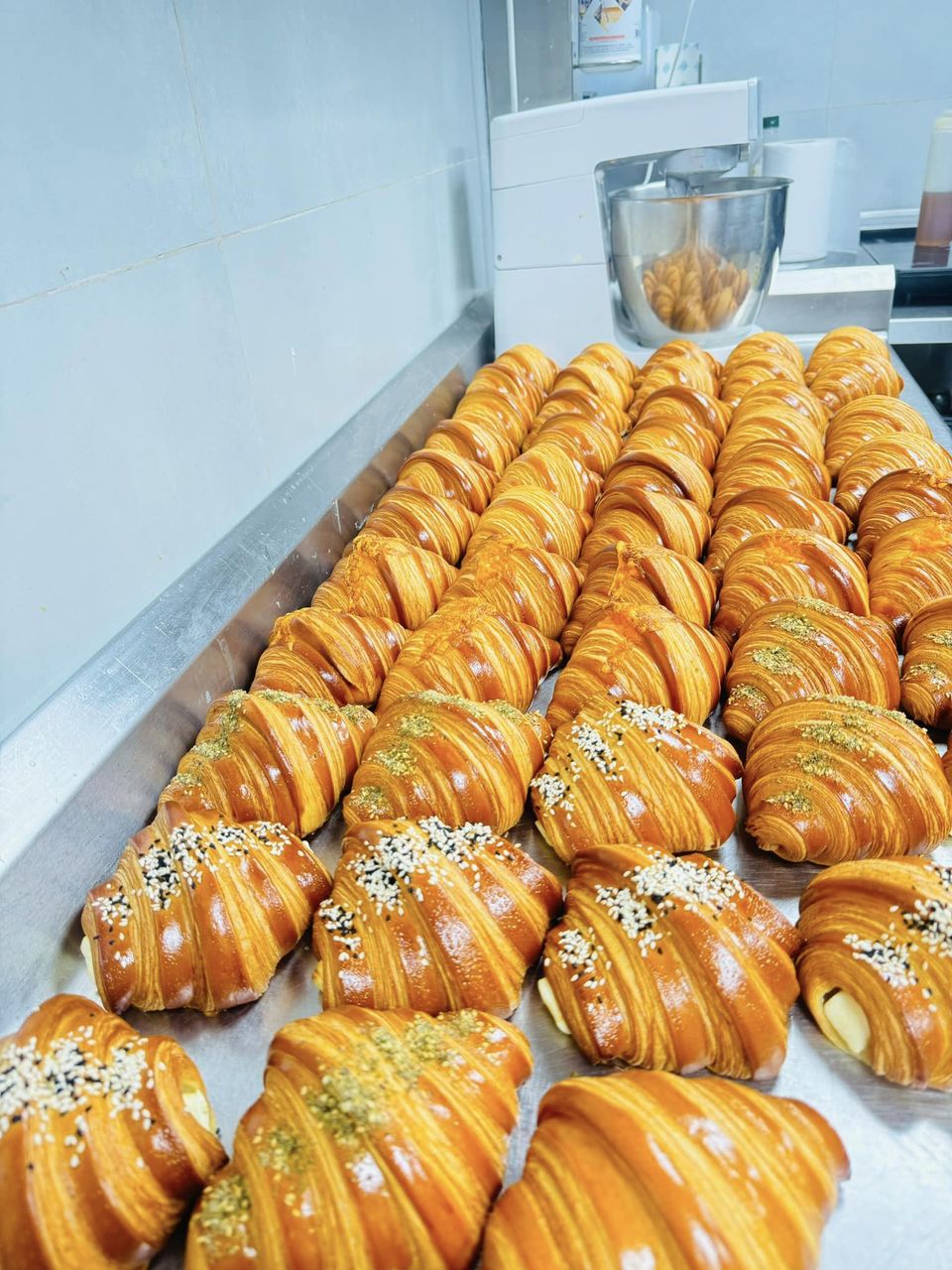1. Make the Dough:
- Activate the Yeast: In a small bowl, mix the warm milk with the sugar and yeast. Let it sit for about 5-10 minutes until the yeast is bubbly and foamy, indicating it’s activated.
- Mix the Dry Ingredients: In a large mixing bowl, combine the flour and salt. Add the softened butter and rub it into the flour mixture until it resembles coarse crumbs.
- Combine Wet and Dry: Pour the activated yeast mixture into the dry ingredients. Mix until a dough forms. Knead the dough on a lightly floured surface for 5-7 minutes, until smooth and elastic. Alternatively, you can use a stand mixer with a dough hook attachment.
- First Rise: Shape the dough into a ball, place it in a lightly oiled bowl, and cover with plastic wrap. Let the dough rise in a warm place for about 1 hour, or until it doubles in size.
2. Prepare the Butter Block:
- Shape the Butter: Place the cold butter between two pieces of parchment paper. Use a rolling pin to gently pound and roll the butter into a rectangular block about 7×7 inches (18×18 cm). Keep the butter cold, but pliable.
- Chill the Butter: Place the butter block in the fridge while you prepare the dough.
3. Laminate the Dough:
- Roll Out the Dough: Once the dough has risen, punch it down to release any air. Roll it into a rectangle approximately 10×14 inches (25×35 cm).
- Add the Butter Block: Place the cold butter block in the center of the dough. Fold the edges of the dough over the butter, fully encasing it. Pinch the seams to seal.
- First Fold: Roll the dough into a large rectangle (about 8×20 inches / 20×50 cm). Fold it into thirds, like folding a letter. This is the first “turn.” Wrap the dough in plastic wrap and refrigerate for 30 minutes to 1 hour.
- Second and Third Folds: Repeat the rolling and folding process two more times, chilling the dough between each fold. This process creates the flaky layers.
4. Shape the Croissants:
- Roll the Dough: After the final fold and chill, roll the dough into a large rectangle about 10×20 inches (25×50 cm). The dough should be about 1/4 inch (6mm) thick.
- Cut into Triangles: Using a sharp knife or pizza cutter, cut the dough into long triangles with a base of about 4 inches (10 cm) and a height of 8-10 inches (20-25 cm).
- Shape the Croissants: Starting at the wide base of each triangle, gently roll the dough toward the tip to form a crescent shape. Place the croissants on a baking sheet lined with parchment paper, with the tip tucked under to hold the shape.
5. Final Rise and Bake:
- Proof the Croissants: Cover the shaped croissants with a clean kitchen towel and let them rise in a warm place for 1 to 1.5 hours, or until puffed up and doubled in size.
- Preheat the Oven: Preheat your oven to 400°F (200°C).
- Egg Wash: In a small bowl, whisk together the egg and milk. Brush the tops of the croissants with the egg wash for a golden, shiny finish.
- Bake: Bake the croissants in the preheated oven for 15-20 minutes, or until golden brown and crispy on top. Rotate the baking sheet halfway through for even baking.
Tips for Perfect Croissants:
- Keep the Butter Cold: To achieve flaky layers, it’s important to keep the butter cold throughout the process. If the dough or butter gets too warm, pop it back in the fridge to chill before continuing.
- Don’t Rush the Process: Croissants take time, and patience is key to creating the perfect layers. Allow adequate time for chilling and rising.
- Use High-Quality Butter: The flavor of the croissants depends on the quality of the butter. Opt for unsalted European-style butter, which has a higher fat content and richer flavor.
Variations:
- Chocolate Croissants (Pain au Chocolat): Place a piece of dark chocolate at the base of each triangle before rolling the croissants.
- Almond Croissants: After baking, brush the croissants with simple syrup and top with almond slices. You can also fill them with almond paste for extra richness.
- Savory Croissants: Add ham and cheese inside before rolling for a delicious savory option.
Serving Suggestions:
- For Breakfast: Serve with butter and jam for a classic French breakfast.
- As a Snack: Pair with coffee or tea for a light afternoon snack.
- Dessert: Drizzle with melted chocolate or dust with powdered sugar for a sweet treat.
Conclusion
Making French croissants from scratch is a labor of love, but the reward is well worth the effort. With their crispy layers, buttery flavor, and melt-in-your-mouth texture, these croissants will transport you to a Parisian café with every bite. Perfect for breakfast, brunch, or an indulgent snack, these homemade croissants are sure to impress!
